“What’s the Difference Between Dinosaurs and Dragons?” This question ignites the imagination, whisking us away to a time where myth intersects with prehistoric reality. Unraveling this enigma uncovers a realm where paleontological facts meet legendary lore, guiding us through an evolutionary maze of terrestrial giants and mythical beasts. When I think of my youth and the stories I read, one of the more fascinating creatures was the dragon. It could fly, and breathe fire, and in some of the stories, the hero had to slay it, as the ultimate test. Combined with a strong passion for dinosaurs, it was easy to make comparisons, and I often wondered – what’s the difference between dinosaurs and dragons? Both creatures are known for their massive physical size and strength. Most dragons, however, are famous for their mystical powers, domineering flight, and fire-breathing capacity.
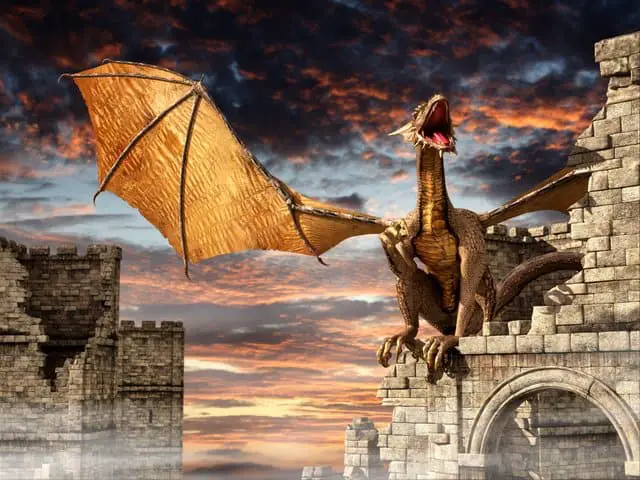
What’s the Difference Between Dinosaurs and Dragons?
Unlike dragons, dinosaurs existed up to 65 million years ago when they all went extinct during the end of the Cretaceous period in history. Dragons are imaginary creatures that were written about (literature and historical texts) and vary in form and size across various cultures in Europe, Middle-East, and China.
Table of Contents
Dragons have long danced through the tapestry of folklore, their scales glistening with enchantment, wings slicing through the fabric of fantasy. In contrast, dinosaurs, those colossal creatures of the Mesozoic era, tread firmly on the grounds of science, their bones and fossils etched into the Earth’s ancient history.
While dragons captivate with their fiery breath and aerial prowess, dinosaurs fascinate through their tangible traces, offering a portal into life millions of years past. Both may share the awe of enormity, yet their legacies diverge—one rooted in the natural world, the other soaring in the imagination.
Stick around while I look at both creatures – dragon vs dinosaur – and give some comparisons and a deeper understanding of the similarities and differences through the ages and in different geographies. Keep reading, you won’t want to miss it!
Are Dragons and Dinosaurs the Same? The Dragon and Dinosaur Differences
Dragons and dinosaurs are not the same, although some images of dragons have characteristics of a dinosaur. For instance, dragons looked physically like giant birds with four limbs, and some had wings – this is similar to pterosaur dinosaurs. Let’s dive deeper into the dragon and dinosaur difference:
● Dinosaurs are real creatures that once roamed the world in dominance. Dragons are just mere fables and myths. Some scientists believe that dragons are conceived from the observation of Jurassic fossil fuels, pythons, anacondas, and the innate human fear of snakes
● Although we have lots of recorded fossils of dinosaurs, there are no dragon fossils
● Dinosaurs lived in diverse parts of the earth, depending on their species. Dragons, on the other hand, mostly lived on mountain tops, lakes, swamps, pools, and large rivers.
● When dinosaurs roamed the earth, mammals hadn’t specialized in the many classes and species existing today. Humanity wasn’t part of the dinosaur-dominated world. However, most dragons are believed to have lived during the existence of the human race. A majority of the world’s literature depicts human interaction with dragons.
● None of the dinosaur species could breathe out fire. However, most dragons, across different cultures and religions, are believed to possess the devastating fire-breathing capacity.
● Dinosaurs are considered to be reasonably unintelligent reptilian creatures, due to the size of their brain capacity. However, most dragon myths depict dragons as wise, knowledgeable, and purposeful creatures. Some dragons could even speak with humans intelligibly.
● Dinosaurs were strong and ferocious, but they didn’t have magical powers. Most dragons were winged creatures that could fly. They possessed magical powers, and even the non-winged dragons could still fly thanks to their mythical superpowers.

● Dinosaurs, if they existed today, could be challenging to train. However, ancient literature depicts the many possibilities through which people could tame dragons.
● Dinosaurs were all reptilian-like creatures. However, some dragons were a mixture of different animals, including lions, hawks, giant snakes, and they had hare-like eyes.
The Main Similarities between Dinosaurs and Dragons
● Dragons and dinosaurs were all reptilian creatures with giant scales.
● Both dragons and dinosaurs were gigantic theropods with towering features and massive tails.
● Dragons and dinosaurs don’t exist today. You won’t get to meet a living dragon or dinosaur.
● Some dragons walked on four legs and couldn’t fly. The same applies to some species of dinosaurs.
● Some dinosaurs were herbivores and docile creatures, while some were hunters and aggressive beasts. Similarly, some dragons were peaceful creatures that didn’t prey on humans or their livestock. However, some dragons were known to eat livestock, children, and entire populations.
————————————————————————————————
Related Dinosaur Articles You Might Also Be Interested In:
Would A T-Rex Really Shake The Ground?
How Much Would A Real Dinosaur Egg Be Worth
How Would A T-Rex Get Up After Falling?
————————————————————————————————
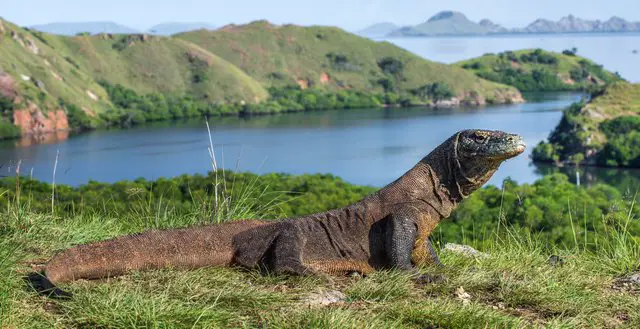
Modern Day Dragons – The Komodo Dragon
The scientific name of the Komodo Dragon is actually Varanus Komodoensis, and it means “lizard beast”. It is the largest modern-day species of lizards, and it can grow up to 10 feet in length. The biggest Komodo Dragons can attain a weight of 70kg. One of the reasons why these lizards are so big is that they don’t face much predatory competition in the tropical island niches. They are mostly the dominant species.
This species of lizards hunt and dominate other species in their niche. They prey on invertebrates, birds, and mammals as big as deer. They have an advantage over large prey because of their venomous bite. They occasionally attack humans in rare cases of human interaction. Since men are mammals, nothing could stop them from eating isolated human prey.
Just like mythical dragons, Komodo dragons are disappearing at an alarming rate. Humans tend to finish off domineering predators for the sake of ecological dominance. As humans encroach on the territories where these giant lizards dwell, they kill them to avoid the venomous bites.
It is just like how humans hunted and killed dragons in mythical lore; humans often sort out the dragons from their isolated habitats. That is why Indonesian law protects the rare species, descendants of dinosaurs, from invasive human activities.
What Dinosaur is Most Like a Dragon? Background on Dinosaurs
Dinosaurs are all descended from the Dinosauria clade and are species related to reptiles. Planet earth has experienced five extinction-level events. The last extinction event finished off a vast majority of dinosaurs. Back then, the earth was green, warm, and lush, and humans hadn’t populated the earth yet.
Reptiles were the dominant species back then, and the word dinosaur means terrible lizard. Dinosaurs flourished during the Middle and Late Triassic Period that span from 230-60 million years ago.
People did not have the notion of extinction, and the the unearthing of Jurassic fossils puzzled them. They wondered where the giant bones they kept finding originated. Some speculated that the bones were from past giants, while others became more creative. Some people assumed that the big creatures had moved somewhere else.
However, they figured out the concept of extinction. They concluded that the bones were so big that such animals couldn’t escape human attention if they still existed. As science grew and became more comprehensive, scientists advanced their knowledge on dinosaurs as well as dating methods for the fossils.
Science, and especially paleontology, helped to piece up clues on dinosaurs. Through the study of fossils and the locations where they are discovered, we can now tell that dinosaurs existed in different species.
Dinosaurs first existed as theropods, but some of them developed the ability to fly. Some were herbivores (plant-eating), while others were carnivores (meat-eating). Dinosaur species like the T-Rex were fearsomely massive and adapted for hunting. The avian dinosaurs survived on a larger scale than the non-avian dinosaurs.
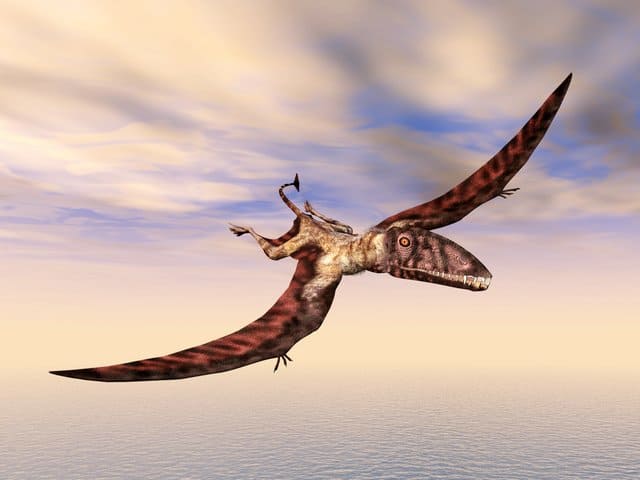
We may have colorful depictions of the various dinosaur species, but they are all imaginative fossil reconstructions. Sure, humanity always speculated the appearance and form of dinosaurs from long ago, but actual scientific study into the ancient and extinct species started in the early 1820s. After that, fossils began making so much more sense as scientific studies took over the imagination and speculation.
From all the dinosaurs that are recorded and found, which one is most similar to a dragon? There exists one dinosaur, the Dracorex Hogwartsia. The name Dracorex hogwartsia was chosen after young visitors to the museum compared the animal to two dragons from the Harry Potter novel, including the Hungarian Horntail. There are also Chinese fossils that depict the characteristics of Chinese dragons, such as the Wulong Bohaiensis (Source).
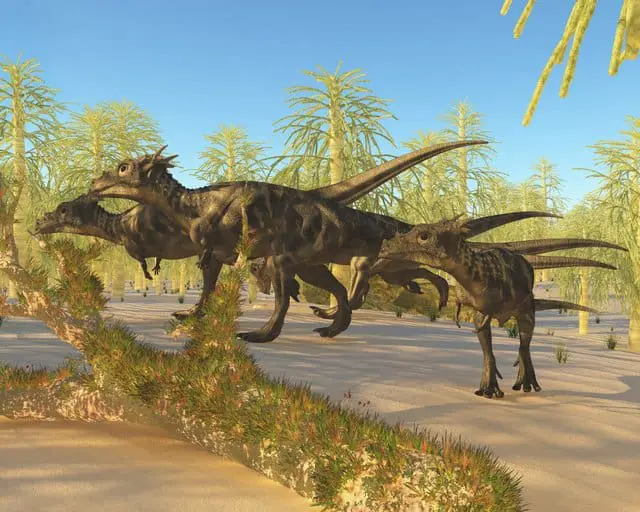
What is the Origin of Dragons, and What Are the Different Types?
Dragon literature dates way back compared to dinosaurs. Maybe the reason is that human imagination is much older than the science of paleontology. Nonetheless, dragons are too common in European, Chinese, Middle Eastern, and other cultures to dismiss them as a creative fallacy. To understand further what is the difference between dinosaurs and dragons, we need to look deeper at dragons in literature around the world and how cultures view them. The most common descriptions of dragons include:
● Serpent-like form (similar to lizards and other reptilian creatures)
● Colossal size (same as the enormous dinosaurs)
● Four feet (they were mainly therapods)
Eastern and Western dragons vary drastically in appearance, and they are perceived differently by the respective cultures. For example, Western culture dreads dragons as creatures of death, destruction, and fire.
However, Eastern culture regards dragons as symbols of fertility, good harvest, royalty, peace, and good tidings. Chinese dragons weren’t fire-breathing beasts of fury like the Western ones that are depicted in the Game of Thrones. Furthermore, European dragons are believed to have wings.
Since the form, size, and shape of dragons vary so much, we should seek to understand some of the most popular and ancient beliefs on dragons. Asian cultures often offer the most ancient literature on dragons. The earliest literature on dragons describes them as giant serpent-like beasts.
They had serrated jaws of teeth, four legs with the giant talons of resembling those of a hawk, and large spinal nodes. The descriptions almost fit gigantic modern-day crocodiles.
In the Middle East, the Mesopotamians wrote quite a lot about dragons. Literature dating back from the courts of kings describes dragons with an itching ignorance on dinosaurs. Sumerian poetry even compares the most oppressive and feared kings to the great serpentine creatures.
According to Sumerians of the time, dragons had the foreparts of a lion and could fly. Some connotations of dragons from that time refer to the Lion of Judea.
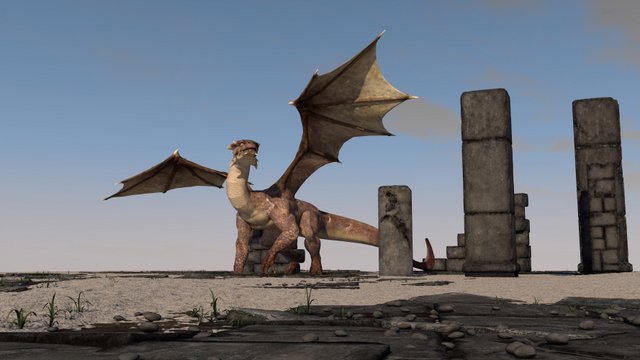
Dragons were also popular in ancient Greece and Rome. Powerful kings used dragon imagery as their symbols and emblems. One example is King Agamemnon, who had embedded a blue dragon motif on his sword belt. Another is the myth in which Greek god Zeus triumphs after defeating Typhon, the beast with 100 fire-breathing serpent heads.
The Greek hero, Heracles, was also praised for managing to kill a gigantic and multiple-headed serpent that dwelt in some swamp. It was one of the hero’s 12 impossible labors. The beast was called Hydra, and it was purpose-driven like the other one Heracles killed in the mythical Garden of the Hesperides.
Its purpose was to prevent him from taking the Golden Apple. The two dragon-like beasts suggest that dragons were intelligent and purposeful in their actions. Such an attribute is seconded in another fable: the Fourth Pythian Ode. In it, a dragon guarded the Golden Fleece that was inside a corpse, and Jason, the hero, had to slay the dragon to retrieve the magical artifact.
In Germanic fables, dragons are fierce and deadly. They also hoard plenty of treasures, and people always tried to steal such treasures at great perils. In one tale, a mere servant took a single golden cup from a vast store of treasure in a dragon’s keep. The dragon woke up and furiously destroyed cities and towns in pursuit of the cup.
The king insisted on meeting the dragon alone to negotiate a truce, but he was old and weakly. It took the stubbornness and bravery of a young warrior, Wiglaf, to save the committed king and slay the dragon. In a similar tale, Sigurd kills a dragon by stabbing its underside when it was unaware. He follows the Germanic god’s, Ordin’s, advice and drinks its blood. Immediately after, he got the power to understand the language of birds.
Medieval Western Europe is also richly endowed by the lore of dragon tales. The dragon lore began with dragons majorly resembling the Mesopotamian beasts, but they evolved with time. They were initially gigantic snake-like dragons. The initial lore was prophetic, and Merlin was involved in its telling. Warlord Vortigern was trying to build a fortress on the mountain for the defense of the Welsh people.
The fortress kept collapsing, and Merlin explained that the construction was placed on a swamp were two dragons resided. Upon draining the swamp, two gigantic dragons emerged fighting. The red one defeated the white one, and Merlin asserted that the white dragon represented the Welsh who’d be conquered by England. However, Merlin promised that one day, Welsh people would triumph over Englishmen and attain their freedom back.
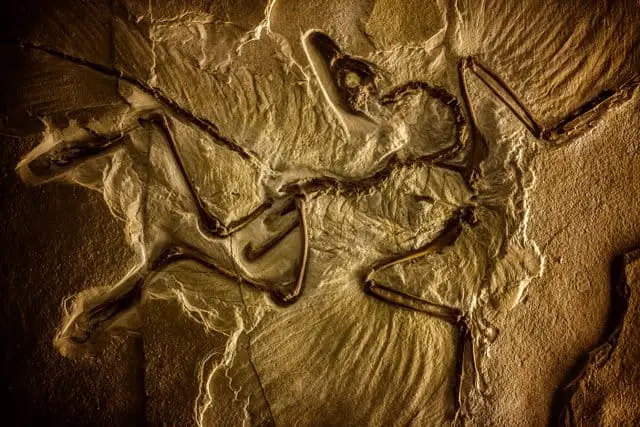
In 1260, a hand-painted illustration of a dragon with two pairs of wings emerged. The dragon was much like what Middle Eastern and Germanic lore described such beasts, but the two pairs of wings were unique.
Just like other lore, the dragon was in a swampy and river-valley area. The dragon was breathing fire while in full flight.
The legends regarding dragons are also entrenched in the Roman-Christian religion: Saint George and the Dragon. In the legend, the dragon dwelt near a lake and had a ferocious appetite. It ate a shepherd, and the people started offering it two sheep daily. They started offering their children when the dragon ate all the sheep.
They eventually offered the royal princess to the dragon as a meal, but Saint George interrupted the meal. He maimed the dragon by stabbing it with his mighty lance and showing it the symbol of the cross. He then displayed the dragon to the people and promised to kill it on one condition; the Libyan settlement had to convert into Christianity.
The medieval gargoyles present other evidence of past European beliefs of dragons. A French fable accuses a fearsome dragon of causing floods and attacking ships on the ancient river the Seine. People offered human sacrifices to the dragon annually to appease its devastating temperament.
They built a church when Priest Romanus required it them as a condition to slay the dragon. He went to kill the beast and mounted its head on the church. It became the first-ever gargoyle.
Chinese Dragon Fossils?
The Chinese dragon is, perhaps, one of the most popular dragons in history. The Chinese loved dragons, and they appreciate the creatures still to this date. Most Chinese dragons were just as powerful, but they were additionally wise and noble. The symbol of dragons still represents abundance and prosperity. Dragons are regarded as the highest in the Chinese animal hierarchy even though they are just mythical creatures.
Despite the love for the dragon, no dragon fossils have ever been found. What comes close, however, are winged fossils with large claws or long-shaped bodies. According to the BBC.com article, “the 125-million year-old fossil suggests many other dinosaurs, including velociraptors, would have looked like “big, fluffy killer birds” and “The dinosaur has been named Zhenyuanlong, meaning “Zhenyuan’s dragon”.
These creatures date back as far as the Bronze Age ritual vessels. Such vessels narrate the prestigious practice of rearing dragons. Back then, a certain young man could understand the will of dragons, and he was loyal to Emperor Shun. The emperor bestowed the sir name Huanlong upon the dragon rear’s family.
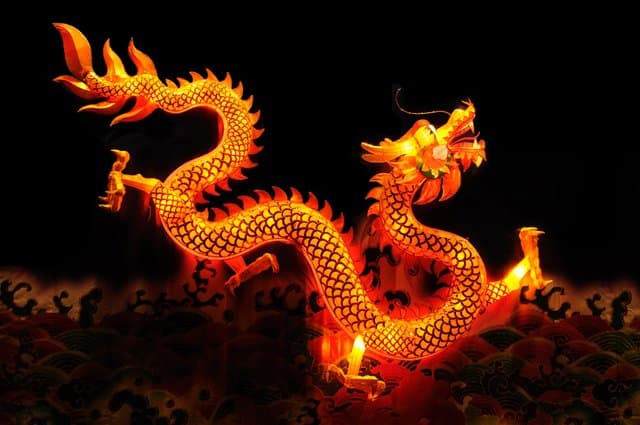
In another legend, a hero by the name Fu Hsi came across a horse dragon when he was crossing the Lo River. It had the fine print of the basics of Chinese writing on its massive body, and Fu Hsi went on to invent ancient Chinese academics.
Another significant involvement of a dragon in Chinese history is the intervention of dragon Ying Long who helped the Yellow Emperor to overthrow a tyrant. The Chinese believe that Emperor Shun, Huangdi, and Emperor Yao were conceived when their mothers mated with dragons.
Chinese people pray to dragons to bring about rain. They believe that draught comes about when dragons hide to hibernate. People often hurl tiger bones or other objects into the pools where dragons live to offend them out of hibernation. They believe that when dragons emerge, they bring about rainfall and favorable farming climate.
Conclusion
Although dragons are mythical creatures and we only have skeletal remains of dinosaurs, it wildly stirs the imagination thinking what these creatures could possibly be. Perhaps this is the reason dragons have such a prominent place in literature and so many people are fascinated with dinosaurs.
